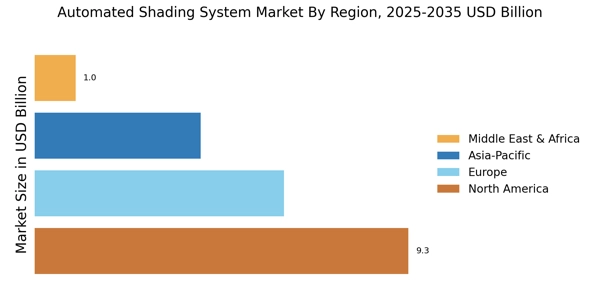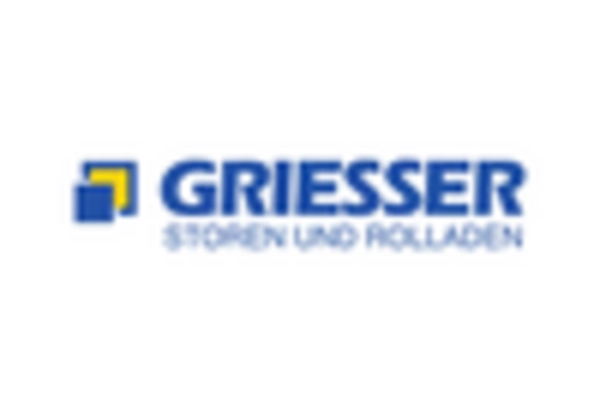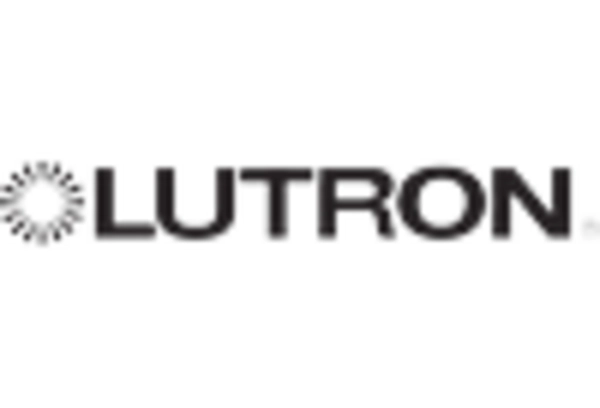The Automated Shading System Market is currently characterized by a dynamic competitive landscape, driven by technological advancements and a growing emphasis on energy efficiency. Key players such as Lutron Electronics Co Inc (US), Hunter Douglas Inc (US), and Legrand SA (FR) are at the forefront, each adopting distinct strategies to enhance their market positioning. Lutron Electronics Co Inc (US) focuses on innovation, particularly in smart home integration, which aligns with the increasing consumer demand for automated solutions. Meanwhile, Hunter Douglas Inc (US) emphasizes sustainability, leveraging eco-friendly materials in their products, which resonates with environmentally conscious consumers. Legrand SA (FR) is actively pursuing regional expansion, particularly in emerging markets, thereby broadening its customer base and enhancing its competitive edge. Collectively, these strategies contribute to a competitive environment that is increasingly shaped by technological innovation and sustainability initiatives.
In terms of business tactics, companies are increasingly localizing manufacturing to reduce lead times and optimize supply chains. This approach not only enhances operational efficiency but also allows for greater responsiveness to local market demands. The market structure appears moderately fragmented, with several key players exerting influence while also facing competition from smaller, niche companies. The collective actions of these major players are likely to shape market dynamics, as they strive to differentiate themselves through unique value propositions.
In August 2025, Lutron Electronics Co Inc (US) announced the launch of a new line of energy-efficient automated shades designed for commercial buildings. This strategic move is significant as it not only reinforces Lutron's commitment to sustainability but also positions the company to capture a larger share of the commercial market, which is increasingly prioritizing energy efficiency. The introduction of these products is expected to enhance Lutron's competitive positioning against rivals.
In September 2025, Hunter Douglas Inc (US) unveiled a partnership with a leading smart home technology provider to integrate their shading systems with advanced home automation platforms. This collaboration is pivotal, as it allows Hunter Douglas to tap into the growing smart home market, thereby expanding its product offerings and enhancing customer engagement. Such strategic alliances are likely to bolster the company's market presence and drive future growth.
In October 2025, Legrand SA (FR) completed the acquisition of a regional player specializing in automated shading solutions. This acquisition is indicative of Legrand's strategy to strengthen its foothold in the automated shading market and diversify its product portfolio. By integrating the acquired company's technologies and expertise, Legrand aims to enhance its competitive advantage and respond more effectively to evolving customer needs.
As of October 2025, the competitive trends within the Automated Shading System Market are increasingly defined by digitalization, sustainability, and the integration of artificial intelligence. Companies are forming strategic alliances to leverage complementary strengths, thereby enhancing their market offerings. Looking ahead, it is anticipated that competitive differentiation will evolve, shifting from traditional price-based competition to a focus on innovation, technological advancements, and supply chain reliability. This transition underscores the importance of adaptability and forward-thinking strategies in maintaining a competitive edge in the market.

















Leave a Comment